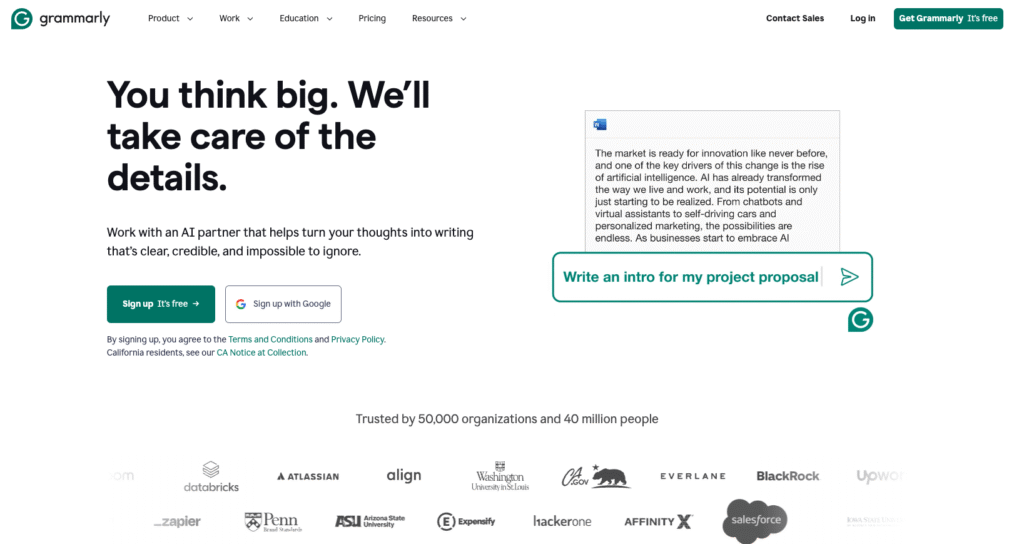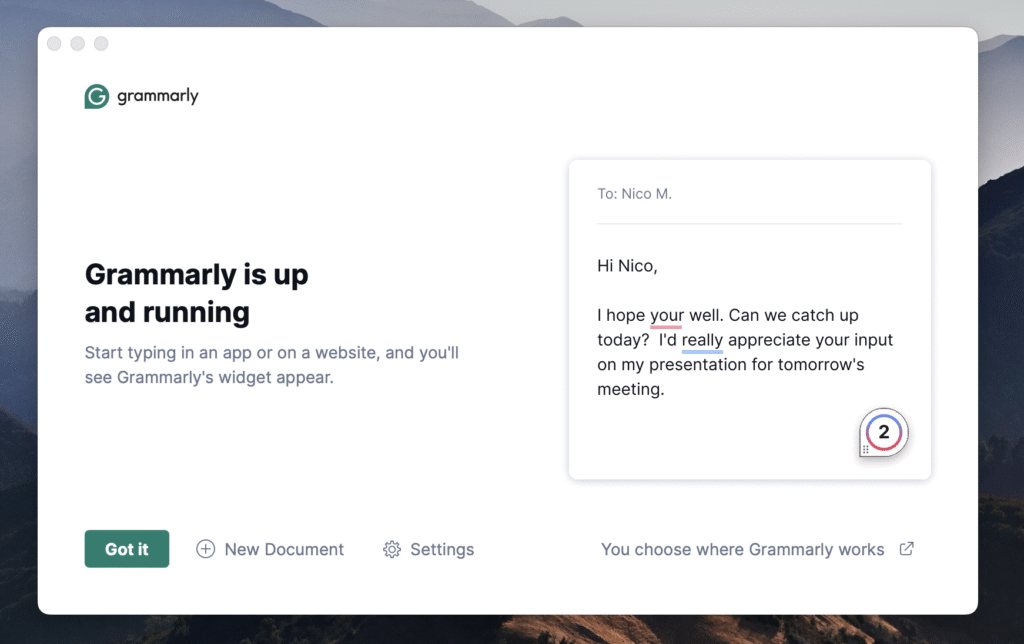Grammarly Review
Can This Writing Assistant Really Sharpen Your Words?
Grammarly has taken the corporate and academic worlds by storm. Whether you’re a student, a blogger, or a professional, chances are you’ve heard about this digital writing assistant. With millions of users and glowing reviews from all corners, Grammarly promises an easier way to write clear, mistake-free text.
But does it live up to the hype?
If you write emails, reports, essays, or even social media posts, strong writing skills help you get your point across and stand out. This review breaks down what Grammarly does, how it works, what’s truly useful [and what’s not], so you can decide if this tool is for you.
Disclosure: our content is reader-supported, which means we may earn commissions from links at no cost to you.
Key Features and Functionality of Grammarly
Grammarly packs a punch with its features. It’s not just a simple spell checker. It tries to make your writing clearer, stronger, and more accurate, no matter where you’re typing.
The tool works on almost every platform you’d use for writing: web browsers, desktop apps, Microsoft Office, and Google Docs. Each version has its own perks, but they all give you feedback as you type.
Real-Time Grammar and Spell Checking
Grammarly’s real-time error detection sits at the heart of the tool. Type out an email or essay, and watch as Grammarly underlines your mistakes. Spelling errors get a red squiggle. Grammar snags pop up in blue. With a simple click, suggested fixes appear, often with a short explanation.
It spots comma splices, wrong verb tenses, missing articles, and awkward phrasing. This is much more than a spell checker built into Word or Google Docs. Grammarly catches mistakes that sneak past standard editors, saving you time and the embarrassment of preventable errors.
Style, Clarity, and Tone Enhancements
Clear writing means more than grammar. Grammarly encourages you to write in an active, direct voice and avoid fluff. You’ll notice suggestions tailored for:
- Clarity: Grammarly highlights long sentences or confusing structures and offers straightforward alternatives.
- Conciseness: Repetitive or wordy phrases get flagged, with tips to make them shorter and punchier.
- Vocabulary: It may suggest stronger or more precise words when it finds clichés or vague wording.
- Tone: This feature checks if your message will come off as friendly, confident, or even too blunt. Helpful for work emails or delicate messages.
Style suggestions are often where Grammarly stands apart from basic spelling tools. The feedback is fast but also feels relevant, helping your writing sound natural.
Plagiarism Detection and Other Premium Tools
Grammarly Premium ramps up the power even further. Here’s a quick look at advanced offerings:
- Plagiarism Checker: Compares your work against billions of web pages and academic papers to spot copied content.
- Formality Levels: Set the mood for your message. Adjust between formal, neutral, and informal to fit the audience.
- Document Type Settings: Choose the kind of document (like a business proposal or a school essay) for customized feedback.
- Advanced Suggestions: Grammar rules, punctuation style, and vocabulary tips broaden with the Premium plan.
Here’s a simple table that shows the key differences:
| Feature | Free Version | Premium Version |
|---|---|---|
| Basic spelling/grammar | Yes | Yes |
| Clarity & tone | Limited | Full access |
| Vocabulary suggestions | Limited | Full access |
| Plagiarism checker | No | Yes |
| Formality settings | No | Yes |
Grammarly Premium targets writers who want every advantage in polishing their work.
User Experience: Pros, Cons, and Pricing
Using Grammarly isn’t about just spotting typos. It fits into your workflow and, with the right plan, can add big value to daily writing tasks. Let’s weigh what it gets right—and where it can fall short.
Ease of Use and Accessibility
Grammarly is built for speed. The interface is clean, easy to navigate, with clear menus and labels. Feedback pops up as you write without lag.
Getting started takes a minute: sign up, install the browser extension or app, and you’re ready. There’s even a handy dashboard for checking past documents and customizing personal dictionaries.
It works on most devices:
- Windows and Mac desktop apps
- Chrome, Firefox, Safari, and Edge browser extensions
- Add-in for Microsoft Word and Outlook
- Direct integration with Google Docs (still in beta but quite reliable)
- Mobile keyboard for iOS and Android
This flexibility means you get corrections whether you’re dashing off a Slack message or working late on a term paper.
Pricing Plans: Free vs. Premium vs. Business
Grammarly uses a freemium model, so you can access basic correction tools for free. For more advanced help, you’ll need to subscribe.
Breakdown of plans:
- Free: Checks grammar, spelling, and punctuation. Some conciseness advice.
- Premium: Adds advanced suggestions, clarity issues, vocabulary, tone detection, and plagiarism checks.
- Business: Everything in Premium, with team management, analytics, and style guides for companies.
Pricing (as of early 2025):
- Premium starts around $12 per month if billed annually, a bit more if you pay monthly.
- Business plans start at roughly $15 per member, monthly.
Should you upgrade? If you write often, send out professional documents, or want to avoid accidental plagiarism, Premium makes sense. Casual writers may find the Free plan goes a long way.
Limitations and Common Critiques
No tool is perfect. Grammarly tries to catch every error, but sometimes it:
- Flags correct language as a mistake (false positives)
- Offers suggestions that don’t fit your intended meaning
- Struggles with technical or creative writing, often favoring simplicity
- Raises privacy concerns [since your text is processed with their servers]
Users sometimes feel flooded with unnecessary suggestions, which can slow down writing. While Grammarly uses strong security protocols, those working with sensitive files may prefer to review privacy settings before uploading.
Verdict
Grammarly stands out as a smart choice for anyone who wants to write with fewer mistakes, more confidence, and a sharper style. It’s fast, friendly, and suits nearly every routine—emails, documents, tweets, you name it. The Free version handles most basic editing needs. Premium is worth it for frequent writers, students, and teams who send important, polished work.
There’s no risk in starting, as the free plan covers a lot. If you’re ready to see how much smoother your writing could be, try Grammarly’s free version or jump into a Premium trial. Strong, clear writing gets noticed, and Grammarly might be the easiest way to boost your skills today.



No responses yet